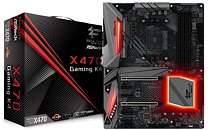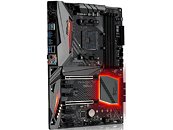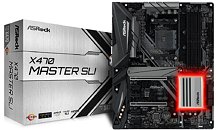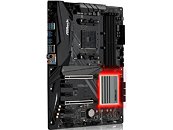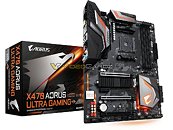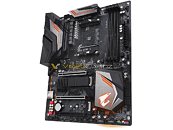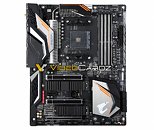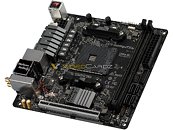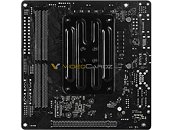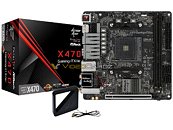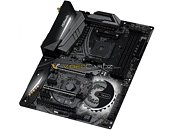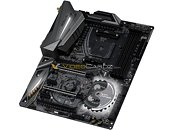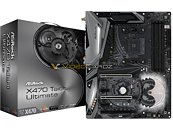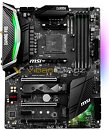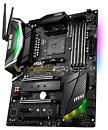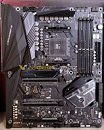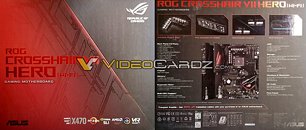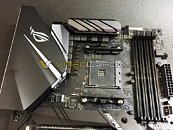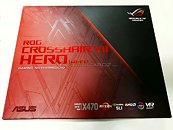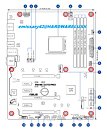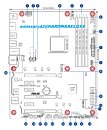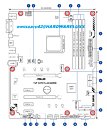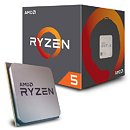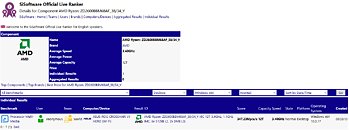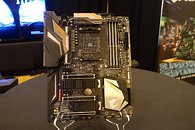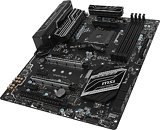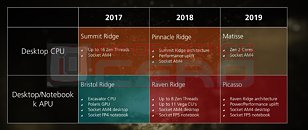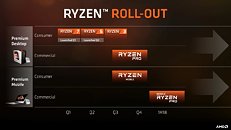
ASRock Fatal1ty X470 Gaming K4 and X470 Master SLI Pictured
ASRock is leading its AMD X470 chipset based motherboard lineup with the X470 Taichi Ultimate and the X470 Taichi. Here are pictures of its mid-range lineup based on the chipset, the Fatal1ty X470 Gaming K4 and the X470 Master SLI. Both models are based on the same exact PCB, with variations on product design and certain features that place the Fatal1ty X470 Gaming K4 a notch above the X470 Master SLI. Built in the ATX form-factor, the board draws power from a combination of 24-pin ATX, an 8-pin EPS, and interestingly, an additional 4-pin ATX power connector, which is usually found in high-end AM4 motherboards. A 12-phase VRM is used to condition power for the AM4 SoC.
The AM4 socket is wired to four DDR4 DIMM slots, supporting up to 64 GB of memory; two PCI-Express 3.0 x16 slots (x16/NC or x8/x8), and one of the two M.2 PCIe slots. Storage connectivity includes two M.2 PCIe slots, the topmost slot is 32 Gbps, and M.2-22110, while the bottom slot is 16 Gbps; and six SATA 6 Gbps ports. USB connectivity includes ten USB 3.0 ports (six on the rear panel, four by headers), and two USB 3.1 gen 2 ports (including one type-C port), on the rear panel. 8-channel onboard audio with a mid-range CODEC, and gigabit Ethernet with an Intel i219-V controller, make for the rest of the two. The Fatal1ty X470 Gaming K4 is slightly better endowed than the X470 Master SLI, in featuring a slightly more upscale onboard audio solution (probably ALC1220 vs. ALC892), Creative SoundBlaster Cinema DSP, RGB LEDs in even the rear I/O shroud, and Fatal1ty Mouse Port (specialized USB port with supposedly lower latency). The two could be priced under $150.
The AM4 socket is wired to four DDR4 DIMM slots, supporting up to 64 GB of memory; two PCI-Express 3.0 x16 slots (x16/NC or x8/x8), and one of the two M.2 PCIe slots. Storage connectivity includes two M.2 PCIe slots, the topmost slot is 32 Gbps, and M.2-22110, while the bottom slot is 16 Gbps; and six SATA 6 Gbps ports. USB connectivity includes ten USB 3.0 ports (six on the rear panel, four by headers), and two USB 3.1 gen 2 ports (including one type-C port), on the rear panel. 8-channel onboard audio with a mid-range CODEC, and gigabit Ethernet with an Intel i219-V controller, make for the rest of the two. The Fatal1ty X470 Gaming K4 is slightly better endowed than the X470 Master SLI, in featuring a slightly more upscale onboard audio solution (probably ALC1220 vs. ALC892), Creative SoundBlaster Cinema DSP, RGB LEDs in even the rear I/O shroud, and Fatal1ty Mouse Port (specialized USB port with supposedly lower latency). The two could be priced under $150.
